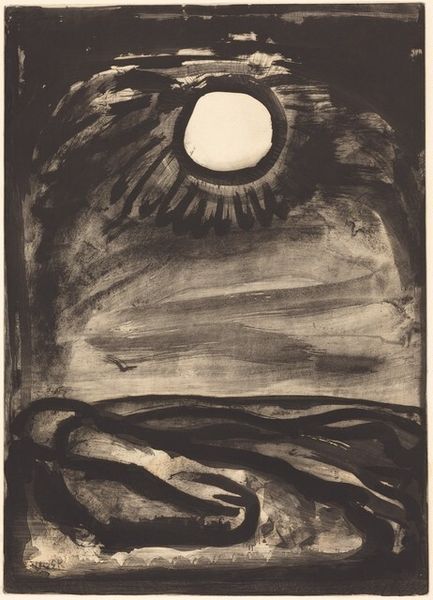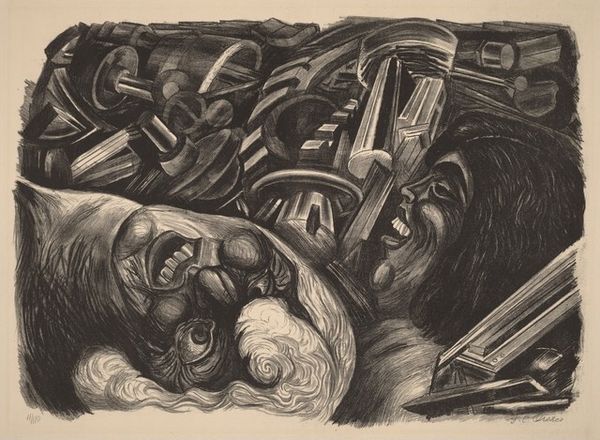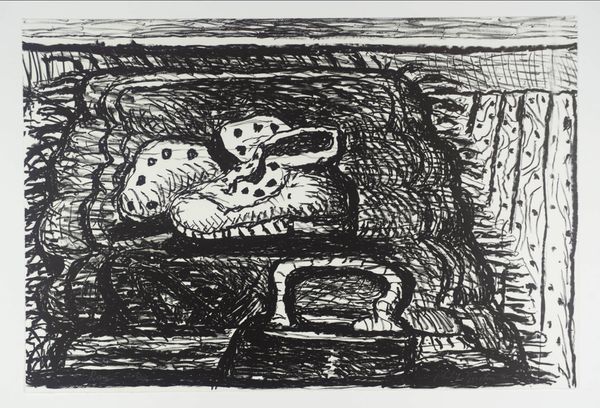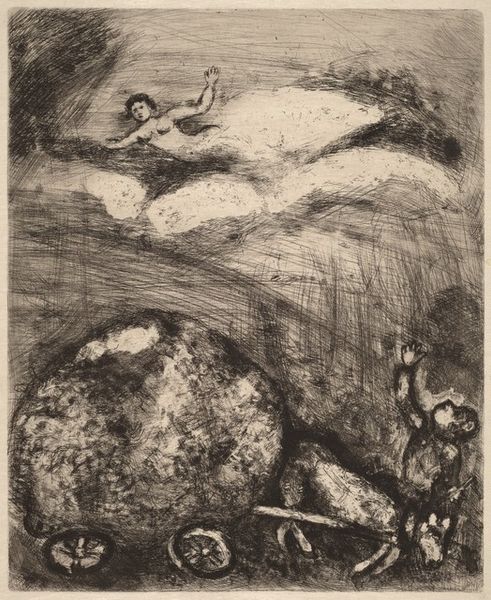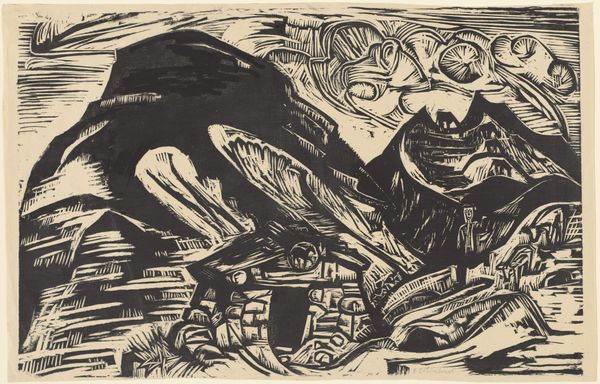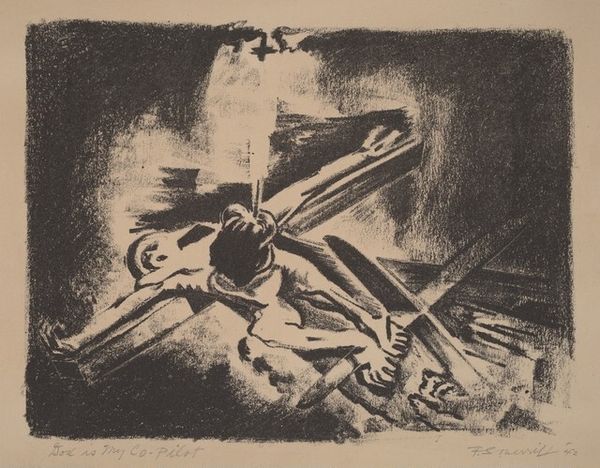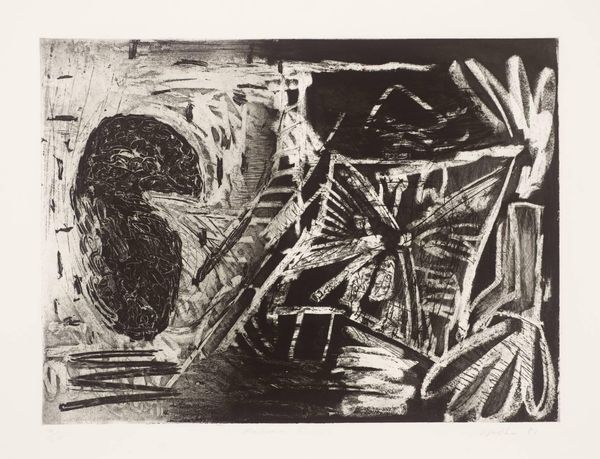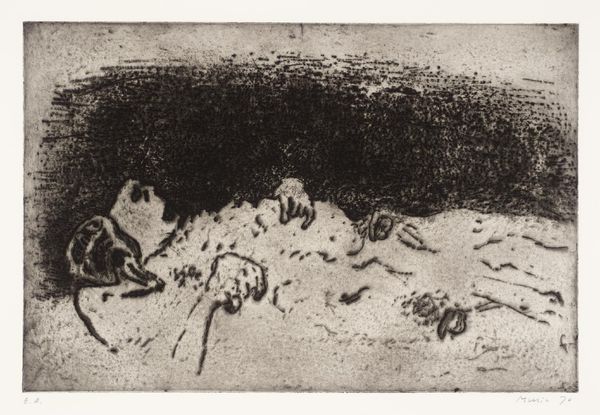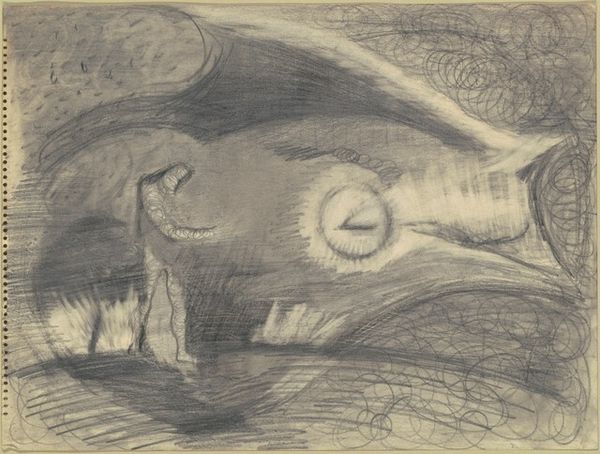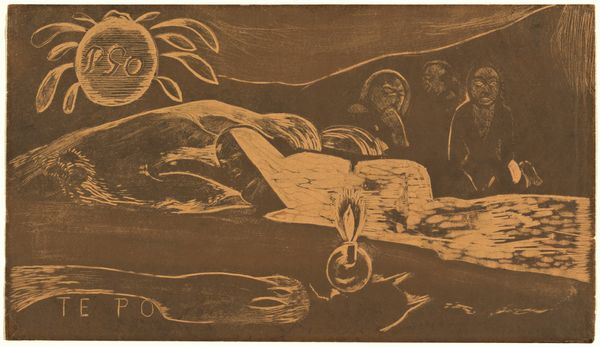
#
abstract-expressionism
# print
#
landscape
#
form
#
geometric
#
line
#
monochrome
Dimensions: 232 x 318 mm
Copyright: National Gallery of Art: CC0 1.0
Curator: This is "Amorphous Forms," a 1948 print by Muriel Tyler. It's an example of abstract expressionism rendered in monochrome, with notable landscape elements. Editor: My first thought is that these shapes resemble a memory—fuzzy edges, like a half-recalled dream. The darkness adds to that sense of ambiguity and otherworldliness. Curator: Interesting take. Viewing this piece through a historical lens, consider the immediate postwar era when it was created. Abstraction became a visual language to represent realities that straightforward representation failed to grasp. This affected even landscape work. Editor: Absolutely. And if we look closer at those amorphous forms, the ovoid shapes particularly, don't they echo ancient fertility symbols? Rounded forms representing potential, perhaps new beginnings after immense loss? The landscape as mother? Curator: That's a convincing argument. It does recall how even abstract forms carry a historical charge; they can subconsciously evoke a set of shared associations that a viewer carries. Although, I wonder how deliberate that reference truly was? Editor: Well, the unconscious is a potent symbol maker, so it doesn't have to be overt. Note, too, how the lines, while 'abstract', mimic natural contours—hills, rivers, even a vague horizon line in the background. This contrast between natural form and total abstraction creates a feeling of displacement. Curator: That's an insightful reading of that tension. From a purely material perspective, it’s an excellent example of printmaking—the contrasts are striking, the textures deeply suggestive. And yet the image remains unsettling, it’s successful ambiguity forces one to keep looking. Editor: Ultimately, that enduring quality is its power: this print operates on multiple layers. Conscious form and symbolic resonance work in concert, allowing an artwork to feel perpetually current. Curator: I agree. This particular print reflects the broader anxieties and hopeful visions that defined the art scene of its time, whilst managing to remain intensely individual.
Comments
No comments
Be the first to comment and join the conversation on the ultimate creative platform.
